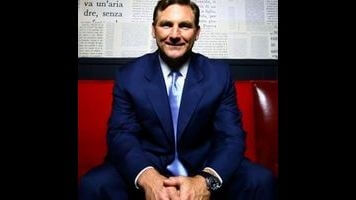Given that 30 For 30 aired the sprawling five-part documentary masterpiece “O.J.: Made In America” just a few months ago, it’d be inapt to say that any other episode this season is “the best the show has done in a while.” So instead, consider “Hit It Hard” to be the best regular episode since “Fantastic Lies” back in March—or even “Four Falls Of Buffalo” last December. If nothing else, “Hit It Hard” (which airs on Tuesday, November 1, at 8 p.m. Eastern) is a reminder that 30 For 30 can still tell a story with a clear point of view and a memorable character in under an hour.
In this case, the character is one of the biggest sports personalities to emerge in the past quarter-century. John Daly—the big-swinging, long-driving, scandal-prone Arkansas golf pro—became the people’s champion back in 1991 when he came out of nowhere to win the PGA Championship at age 25. Admitted to the tournament as the ninth alternate, Daly walked onto the links with his thin mustache and caveman mullet, looking as though he’d wandered in by accident from a nearby municipal course. But he whacked the ball further down the fairway than any of his competitors, with an undisciplined backswing that scraped the sky before batting back down with righteous fury. As commentator David Feherty puts it in this 30 For 30, “It was like watching a new species.”
“Hit It Hard” opens with that ’91 PGA Championship, then circles back to fill in a little of Daly’s backstory: how he trained himself on a local nine-hole course, then accepted a scholarship at the University Of Arkansas, where he learned to manage his weight through a diet of popcorn, cigarettes, and Jack Daniels. This episode doesn’t really try to be wide-ranging when it comes to Daly’s long and bumpy career, though. Co-directors Gabe Spitzer and David Terry Fine (both sports-doc veterans) instead focus primarily on what happened between the moment when Daly became a superstar and four years later, in 1995, when he surprised the golf world again by winning the British Open in a thrilling playoff.
Mostly, the documentary is about how the media kept trying to fit Daly into a compelling, familiar narrative, which he’d defy over and over again. He started out as everybody’s favorite regular joe hacker—the sort of weekend athlete who sees golf as an excuse to pound beer with his buddies more than any kind of sporting challenge. At tournaments in his early years as a pro, Daly would pull out his driver even when the hole didn’t call for it, because he knew what the gallery wanted to see. At a time when golf was considered an elitist pastime, Daly brought in new fans, who identified with his raw strength and lack of pretension.
But when he started having problems on and off the course, the same establishment that seemed happy to see him in ’91 was just as eager to put him back in his place. When Daly’s drinking became a problem, columnists worried that he was too invested in his salt-of-the-earth image. When he threw his clubs and balls around during a tourney—or stormed off mid-round—announcers gave little lectures about “tradition and dedication.” Then when a newly sober Daly came back strong in ’95, the media was happy to report that he’d “conquered a lot of demons.” Yet as the extended epilogue to “Hit It Hard” makes clear, Daly found fresh vices to replace the ones he’d thought he’d beaten when he won the Open.
There are some similarities between this 30 For 30 and “Doc & Darryl,” which was also about how sports reporters love redemptive arcs but don’t know how to deal with the messiness and multiple sad codas of a typical addict’s story. Daly’s a somewhat different case from someone like Dwight Gooden, because while he’s struggled with alcohol and has spent time in rehab, he’s more of an all-around ne’er-do-well than someone with a single crippling weakness. He boozes. He gambles. He gobbles M&Ms. He churns through wives every decade or so. This is all part of the reason why fans still love him: because his problems are relatable, and he’s uncommonly honest with people about what he’s done wrong.
Well… mostly, anyway. In between telling the story of Daly in the ’90s, Spitzer and Fine show the man today, trying to be a good dad and husband while making a steady income from public appearances (at both golf tournaments and Hooters parking lots). In his interviews with the filmmakers now, Daly echoes a lot of what he said to the press 20 years ago. He downplays a high-profile domestic violence incident. He says that he doesn’t really feel the need to drink any more. At one point he insists that he never drank during a PGA event, before admitting that he was sometimes drunk at the start of a round from the night before. Then he adds that he did actually drink at one especially boring tournament, before finally suggesting that if he did drink at other tour stops, he doesn’t remember it.
Daly doesn’t come across as a troubled individual in “Hit It Hard,” nor does he seem entirely healthy and happy. He appears to be a guy who still has good stretches and bad stretches, and who has long ago come to terms with the idea that he’s likely going to live out the rest of his life as a brand, not as a competitive pro golfer. But as Jim Nantz notes at one point in this documentary, the history of golf is full of one-and-done champions, who become overnight sensations and then disappear again into obscurity. This episode takes an unblinking look at a golfer who instead just keeps swinging, regardless of whether that fits with the stories that the sports media want to tell.









































